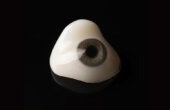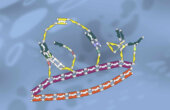When Design Is the Problem

In 1842, more than 500 women died shortly after giving birth at the Vienna General Hospital in Austria. With over 3,000 births that year in the same hospital, this mortality rate was close to 16 percent. The cause of death had been known for many years, and it had killed thousands of women around the world.

It went by different names, such as puerperal fever, the “black death of childbed,” or “the doctor’s plague.” Puerperal fever killed up to 25 percent of all women giving birth in 18th-century childbirth wards across Europe and America, but it was not caused by an unknown airborne virus or a global pandemic. Physicians who were determined to understand the cause noticed that women who gave birth at home had a considerably lower probability of contracting this fever, which was a curious and vexing fact for many prestigious hospital doctors. In 1843, one year after the fatal loss of those women in the hospital in Vienna, American physician Oliver Wendell Holmes Sr. published “The Contagiousness of Puerperal Fever,” an essay that identified the culprit of this plague — poor hygiene by doctors and nurses.
At that time, doctors traveled from one childbirth to the next without washing their hands, sometimes just after performing an autopsy — contaminated utensils, clothes, and all. Today, we call the “black death of childbed” simply postpartum infections. They assail a much smaller number of women, who can be treated with antibiotics and make a swift recovery in most cases.
The underlying message, according to British-American author Simon Sinek, who popularized this tale in one of his talks, is quite clear: Sometimes you are the problem. When it comes to 18th-century puerperal fever, doctors were the problem. When it comes to our modern-day culture of waste, excess, and addiction, design is the problem.
We fetishize and worship the creation framework as if it’s the only thing that matters.
While designers are eager for praise and acclaim and create an aura of ostensibly cultured and intellectual pursuit, often involving awards and accolades, design itself takes no responsibility for what happens when things go wrong. But as Sinek points out, you cannot have credit without accountability. As with the doctors who saw no wrongdoing in their own behavior, so designers today turn a blind eye at their nefarious effect on the world. The difference, however, is that the doctors’ arrogance can be attributed to ignorance. After all, germ theory was just a theory back then. Hand washing didn’t seem like a logical solution to the problem. Today, designers cannot claim such obliviousness. To continue ignoring the repercussions they have on society and the environment is simply negligent. We must care as much about our impact as we care about all other design elements — the creative process and craft, quality and attention to detail, user needs and empathy. We need a conscientious design that understands and prioritizes positive impact.
One reason for this shortcoming is that designers continue to be trained not to see consequences. They don’t see the problem. We fetishize and worship the creation framework as if it’s the only thing that matters. Frameworks are an important tool in any discipline, yet they can also condition thought. If they are simultaneously skewed and prevalent, they can have a damaging effect. In 2002, the British Design Council introduced one of the most famous depictions of the design methodology: the double diamond. This diagram divides the design process into two diamonds, each with two linear phases. In the first diamond, discover and define are about identifying the problem, and in the second diamond, develop and deliver are about solution ideation and implementation. Over the past two decades, this simple model has become a universal reference for how design should operate and a symbol of the design thinking movement, influencing the corporate, nondesign world as well.
It is by no means the first attempt at visualizing the design process in an easily graspable diagram. One of the earliest models for the creative process was created by an English social psychologist and a cofounder of the London School of Economics in 1926. Graham Wallas introduced what later became known as the Wallas creativity process, a model of creativity comprising four stages — preparation, incubation, illumination, and verification. Since then, there has been a long succession of models and diagrams that have tried to bring a new perspective to the mix. In “Innovation Methods Mapping: Demystifying 80+ Years of Innovative Process Design,” GK VanPatter and Elizabeth Pastor, the cofounders of the design consultancy firm Humantific, collected and analyzed more than 60 innovation process diagrams produced between 1926 and 2014. While the diagrams most often had four, six, or eight steps, underlying most was a simple, archetypal, three-stage ideation process: Identify the problem, create the solution, and implement it. It is a straightforward recipe. There were a few other differences in approach, with some models showcasing a linear progression and others emphasizing ideas of iteration, repetition, and cyclicality.
One important finding in this analysis was that the creation stage appears to be the most prominent. This was the case for at least 48 diagrams. Most models appear holistic or balanced at first, but when looked at closely, it’s clear that there’s a strong weighting toward creation — toward defining and conceptualizing the solution rather than optimizing or delivering it, for instance. The overemphasis on design creation is symptomatic of a wider problem in design. It fuels the myth of the designer as the creative genius, the artist in disguise, while it downplays key design responsibilities. Another alarming insight from VanPatter and Pastor’s research is that only a handful of methods consider human behavior, such as recommended actions, techniques, or approaches. And just one includes a mention of human values. This oversight is disquieting. If all frameworks fail to accommodate desirable human values, then ethics, integrity, and responsibility are simply irrelevant factors in a design process. We are simply locked in an unseeing production cycle.
Anticipating what is yet to come must be part of your role as a designer.
However, the most important omission, which sits at the genesis of my book “The New Designer,” is that all models envision the design process as ending in the last stage — invariably labeled as delivery or implementation — as if there’s nothing else beyond that. This is where the work of a designer ends. And to many, so does their accountability. If we look back at the double diamond diagram, it is clearly incomplete. We are missing an equally important third diamond that comprehends the notion of effect and consequences. In the past, we shed a bright light on the first diamond and the need to understand the problem, but now we must become resourceful at deciphering an elusive third diamond on impact.
Anticipating what is yet to come must be part of your role as a designer. This means flying in the face of contemporary reality in order to dream the impossible and imagine the unimaginable. You can pay close attention to the work of design studios doing groundbreaking work in the domain of design fiction, such as Superflux and The Near Future Laboratory, to understand some of the methods and practices involved. Speculative design can still be a daring and challenging experience. If you are unable to work on foresight frequently, allow yourself, your team, or your organization to focus on occasional experimental projects.
One way to do this is to look at existing fringe technologies, products, or trends and hypothesize how they will evolve in the future. It can provide a series of meaningful scenarios that can be discussed and evaluated as a group. It can be a great exercise to do with your peers. We need that level of abstraction and open-endedness to develop our problem-solving skills. Ask the team to imagine there were no business or technological constraints and that they could simply start from scratch. What would they do differently? Start by asking, “What if?” This can be a liberating and energizing routine, and you might run into a speculative idea worth pursuing.
It’s time we step out of our simplistic problem-solution narrative and ask what lies beyond: What journey extends beyond delivery? Otherwise, we risk being as compliant to the status quo as 18th-century doctors were, failing to see that we ourselves are the problem. We cannot afford more design solutions carelessly thrown into a vacuum of consequences.
Manuel Lima is an internationally renowned designer and author of several books including “The Book of Circles,” “The Book of Trees,” “Visual Complexity,” and “The New Designer,” from which this article is adapted. He is a fellow of the Royal Society of Arts and a regular lecturer at conferences around the world.



